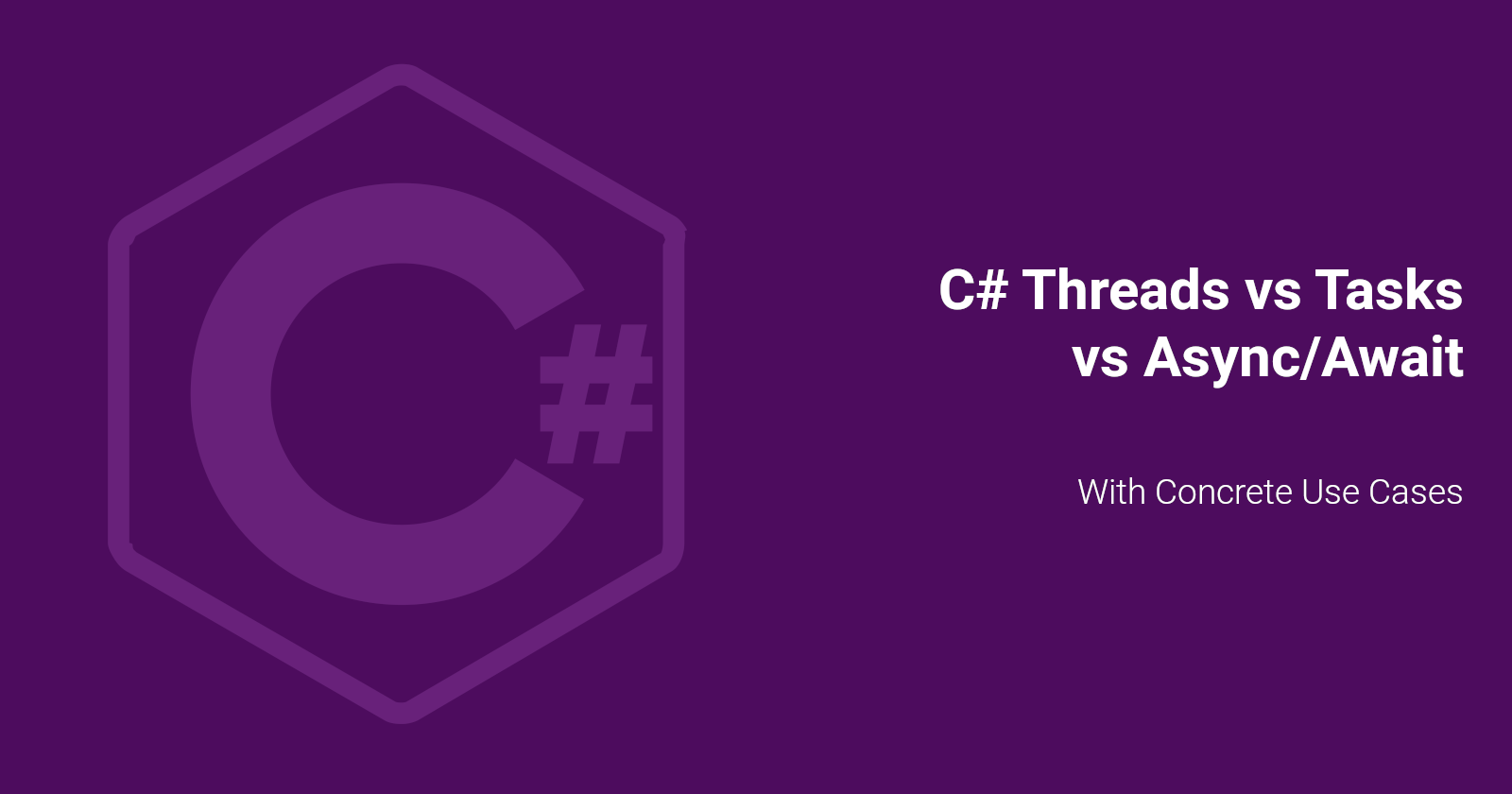A Comprehensive Guide to C# Threads, Tasks, and Async/Await
 Sami Mejri
Sami Mejri
Introduction
When it comes to parallel programming in C#, there are multiple options available, but the most common ones are threads, tasks, and async/await. Each has its advantages and disadvantages, and choosing the right one depends on the specific use case. In this blog post, we will explore the differences between these options and their use cases.
Threads
Threads are the simplest form of parallelism in C#. They are lightweight, and each thread runs independently of other threads. This means that threads can be used to perform multiple tasks simultaneously. However, threads have some disadvantages, such as the potential for race conditions and deadlocks. Threads are best used for long-running, CPU-bound tasks, such as complex calculations or data processing.
Thread Pool
Another option for parallel programming in C# is the thread pool. The thread pool is a collection of threads that are managed by the runtime. Instead of creating new threads for each task, the thread pool reuses existing threads, which can improve performance and reduce resource consumption. The thread pool is best used for short-running, CPU-bound tasks that do not require low-level thread synchronization.
To use the thread pool, developers can submit tasks to the thread pool using the ThreadPool.QueueUserWorkItem method. This method takes a delegate that represents the code to be executed. The thread pool will execute the delegate on an available thread.
While the thread pool can improve performance in certain scenarios, it is important to keep in mind that it is not always the best option. The thread pool has a limited number of threads, so if too many tasks are submitted at once, it can result in thread starvation and decreased performance. Additionally, the thread pool does not provide low-level thread synchronization, so it is not suitable for all types of tasks.
Tasks
Tasks are a higher-level abstraction than threads. They provide a simple way to run code asynchronously and in parallel. Tasks are implemented using threads, but they abstract away the complexity of thread synchronization and management. Tasks are best used for short-running, CPU-bound tasks that do not require low-level thread synchronization. By default, Task.Run will use the thread pool to execute the task. This means that the task will be executed on an available thread from the thread pool.
Task.Run() vs Task.Factory.StartNew()
When it comes to creating tasks in C#, there are two main options: Task.Run and Task.Factory.StartNew. Both of these methods can be used to create and execute a task asynchronously, but there are some differences between them.
Task.Factory.StartNewprovides a lower-level way to create and execute a task. It allows developers to specify options such as task creation options, task scheduler, and the cancellation token. This level of control can be useful in certain scenarios, such as when creating long-running tasks or tasks that require specific task scheduling or cancellation behavior.
Task.Run, on the other hand, is a higher-level abstraction than Task.Factory.StartNew. It provides a simpler way to create and execute a task by abstracting away some of the details of task creation and management. Task.Run relies on Task.Factory.StartNew behind the scene, it was added to C# because it sounds simpler and easier to remember.
In general, Task.Run is the recommended way to create and execute a task in most scenarios. It provides a simpler and more efficient way to create and execute a task, and it is easier to use correctly than Task.Factory.StartNew. However, if more control over task creation and management is needed, Task.Factory.StartNew can be a useful alternative.
One particular use case to mention here, Using Task.Factory.StartNew with TaskCreationOptions.LongRunning will execute the task on a new Thread, not on the ThreadPool.
Async/Await
Async/await is a recent addition to C#, and it provides a simpler way to write asynchronous code. The async/await keywords allow developers to write asynchronous code that looks like synchronous code. Async/await is best used for I/O-bound tasks, such as downloading files or accessing a database.
Thread Safety
One important consideration when choosing between threads, tasks, and async/await is thread safety. Thread safety refers to the ability of code to run correctly and without unexpected behavior when multiple threads are executing simultaneously. Threads require developers to manually manage thread synchronization, which can be error-prone and lead to race conditions and deadlocks. Tasks and async/await, on the other hand, abstract away thread synchronization and provide a simpler way to write thread-safe code. When choosing between these options, it is important to consider the thread safety requirements of the specific use case.
Conclusion
In conclusion, C# provides multiple options for parallel programming, including threads, tasks, and async/await. Threads are best used for long-running, CPU-bound tasks, tasks are best used for short-running, CPU-bound tasks that do not require low-level thread synchronization, and async/await is best used for I/O-bound tasks. By understanding these differences, developers can choose the right option for their specific use case and write more efficient and scalable code.
Subscribe to my newsletter
Read articles from Sami Mejri directly inside your inbox. Subscribe to the newsletter, and don't miss out.
Written by

Sami Mejri
Sami Mejri
Einstein said: “If you can’t explain it simply, you don’t understand it well enough.” I am Senior .NET Software Engineer, I worked on Finance and Investment Solutions during the last decade. I am also an AWS Certified Developer Associate. In this blog, I am trying to explain complex .Net Development concepts in simple words, diagrams, etc... and provide helpful tips and tools. My main focus is to help beginners excel in their Software Development journey.